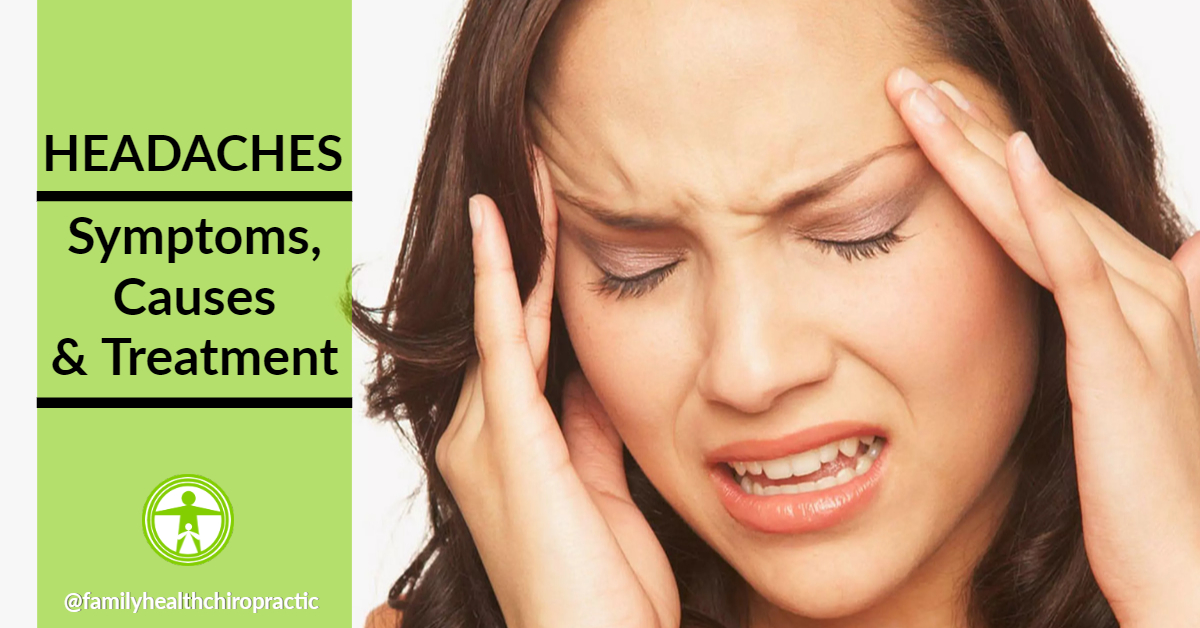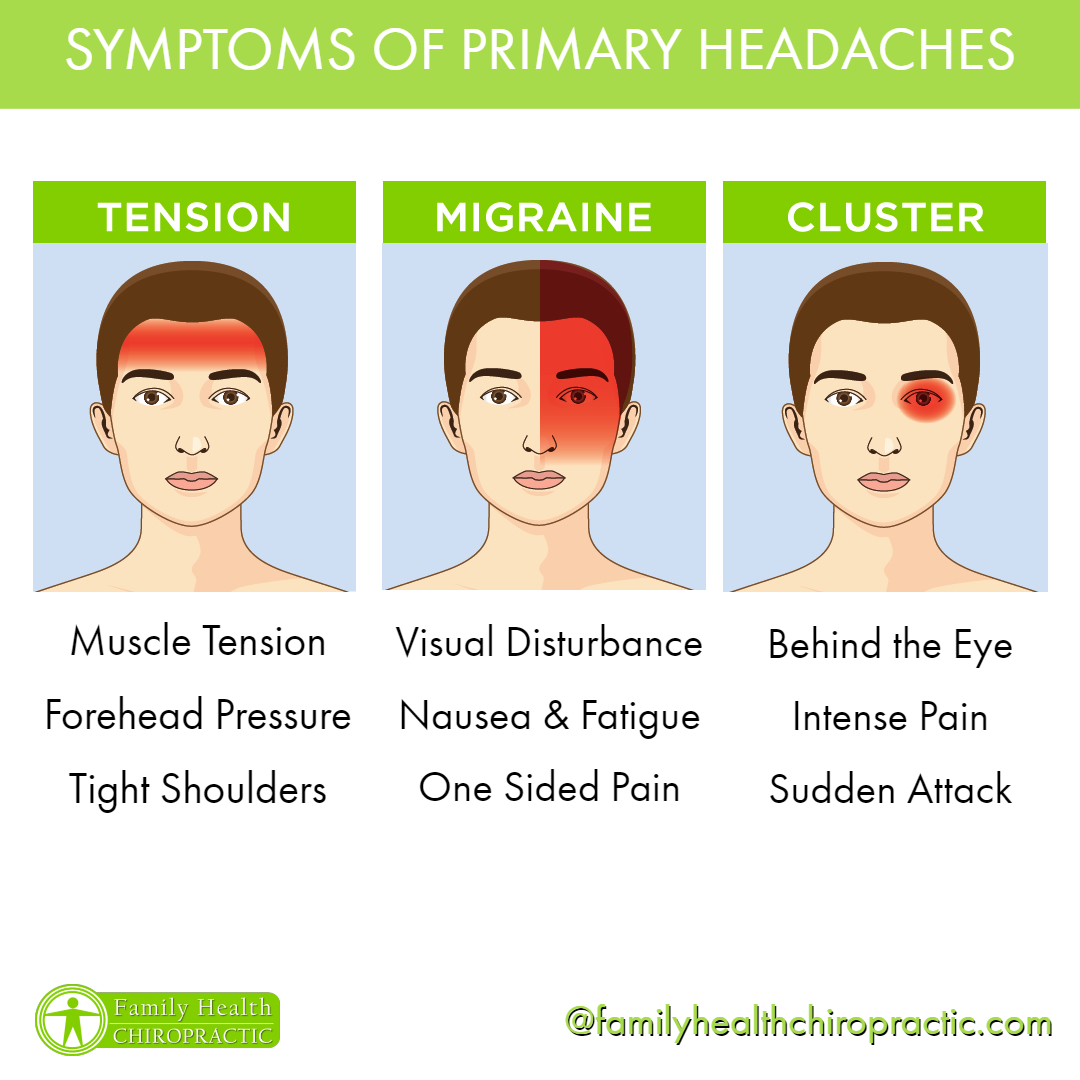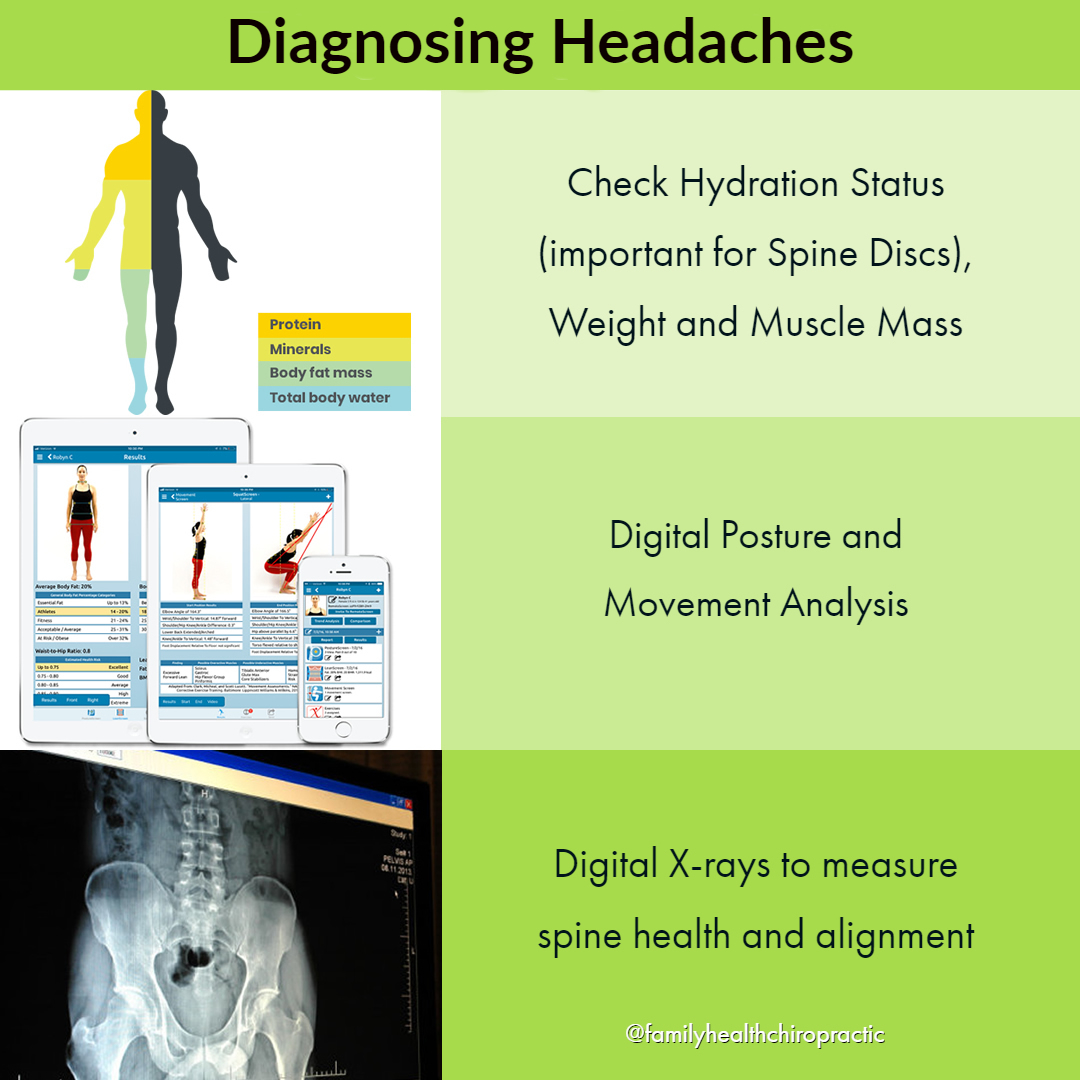Headaches: Symptoms, Causes & Treatment
Our Austin Chiropractic Team Offers a Comprehensive Approach to Headache Treatment
Headaches Are No Fun
Seven out of 10 people in the U.S. have at least one headache a year. Although the majority of headaches only last 2 to 3 hours, some can persist up to two weeks at a time. The two main types of headache are primary and secondary. The majority (90 percent) of all headaches are primary headaches and include tension, migraine and cluster headaches. Secondary headaches are those that result from a specific medical conditions such as an infection or increased pressure in the skull due to a tumor. These headaches account for fewer than 10 percent of all headaches.

Life is filled with stress and unexpected events, and something like a “common” headache is all too often not address or simply masked by taking a painkiller such as aspirin (which is now linked to causing more serious health issues), tylenol or ibuprofen.
While there are dozens of reasons why someone can get headaches, it's usually a good indicator that your body is missing something – this could literally be taking a break and breathing, improving hydration status or checking in on how you're eating.
Headaches can be triggered by any number of chemicals such as artificial food ingredients, personal cosmetics, household cleaning products, air pollution and even food sensitivities.
Then there are mechanical issues such as physical stress and fatigue, eyestrain, poor posture, lack of exercise and tight muscles in the neck.
Regardless, it's important to recognize that your body is telling you that something needs to change, so begin to pay attention to those signals.
If headaches occur in conjunction with neck pain they may be a result of loose or injured ligaments in the neck vertebrae, which can cause referred pain to the head.
Headache Symptoms

Headaches can be classified as primary headaches or secondary headaches.
The most common primary headaches include tension headaches, migraines and cluster headaches.
Symptoms of Tension Headaches
A muscle tension headache is described as a constant and throbbing pain, usually felt above the eyes or more generally over the head.
Pressure felt behind the eyes may be accompanied by tightness around the neck and or squeezing pain on both sides of the head.
In addition to head pressure, these types of headaches are often accompanied by tight shoulders and muscles of the neck.
Symptoms of Migraine Headaches
Migraine headache symptoms include anxiety and mood changes, an altered sense of taste and smell, either an excess or a lack of energy, visual disturbances, a pins-and-needles sensation or numbness in the face, pounding on one side of the head, nausea and a dislike of bright light or loud noises.
Migraines often begin in the evening or during sleep.
In some people, the attacks are preceded by fatigue, depression, irritability and restlessness.
The majority of migraines cause one sided facial pain, beginning around the eye and temple and spreading to the back of the head. The pain can be described as throbbing or pulsating and often times people will experience nausea.
Symptoms of Cluster Headaches
Cluster headaches are uncommon but very severe in nature and they occur five times more often in men than women.
Although anyone can get cluster headaches, the typical patient is a middle-aged man with a history of smoking.
The pain always strikes one side of the head and is very severe. The eye on the painful side is red and watery, the eyelid may droop, and the nose runs or is blocked. The attack starts abruptly and lasts for 30 to 60 minutes. Most sufferers become restless and agitated during the attack; unable to sit still, they pace, jog in place, or beat their head against a wall. Nausea and sensitivity to light and sound may accompany the pain.
What Causes Headaches?

Specific nerves of the blood vessels and head muscles switch on and send pain signals to the brain.
While we don't truly understand why this occurs, we know there are strong relationships due to:
Various Illnesses: including infections, colds and fevers. Conditions such as sinusitis (inflammation of the sinuses), throat infections, ear infections and allergies can all trigger headaches.
Stress: emotion and or physical stress to the body adds up and can certainly trigger a headache. In addition, skipping meals, consuming alcohol, losing sleep and taking too many medications is also stressful to the body and can trigger a headache.
Environment: such as strong smells, household chemicals, perfumes, allergens and certain foods are all associated with headaches.
Headache Diagnosis

Austin Chiropractor Dr. Daniel, likes to start his headache assessments by asking about the symptoms you're experiencing. how often they happen and for how long they've been happening.
While most people do not need special testing, our Austin chiropractic clinic will perform:
- Body Composition (body fat, muscle mass hydration status, height and weight)
- Digital Posture Analysis
- Muscle Strength and Reflex Testing
- Digital X-ray
All of these tests are appropriate in helping to diagnose headaches.
If our evaluation does not help to determine the cause of headaches, additional tests such as MRI's or EEGs (brain scans) can be ordered.
Headache Treatment

Although medications and injections may help to alleviate the symptoms of headache – they provide no particular cure – they can also contribute to the problem.
To identify the true causes of headaches requires a close inspection of the structures of the spine, the muscles, ligaments and tendons of the spine as well a close look at the body's biochemistry.
Based on the cause of your headaches, then you can consider the appropriate treatment of tension headaches and migraine treatments.
Chiropractic care has been researched and administered for decades on patients like yourself who suffer from headaches and migraines.
Chiropractic treatments are drug-free and take a holistic approach to treating your headache or migraine.
Benefits of Chiropractic Treatment for Headaches
Chiropractic care is a non-invasive and safe health care treatment option that does not require any medication or surgery to help relieve your headaches or migraine.
The benefits and effectiveness of chiropractic care and treatment techniques have been researched and studied over the years.
Patients have reported immediate pain relief during treatment sessions and can see a great difference in helping ease their headaches and migraines over time.
There are numerous benefits that chiropractic care and treatment can provide, including:
- Short and long-term relief for headaches and migraines
- Identifies and resolves the causes of your headaches or migraines
- Improves quality of life
- Eases headaches and migraines through effective, drug-free techniques
- Improves nerve system functions
- Promotes healthy blood flow
- Promotes quicker healing
- Promotes a healthy lifestyle
- Enhances social health
- Enhances physical health and fitness
- Improves mental health stability
If you live in the Austin area and are suffering from headaches, suffer no more!
Here at Family Health Chiropractic, treatment of headaches is only the beginning of how we can help you live a happy, healthier life.
Click here to sign up for a consultation with Austin’s Best Chiropractor today!
